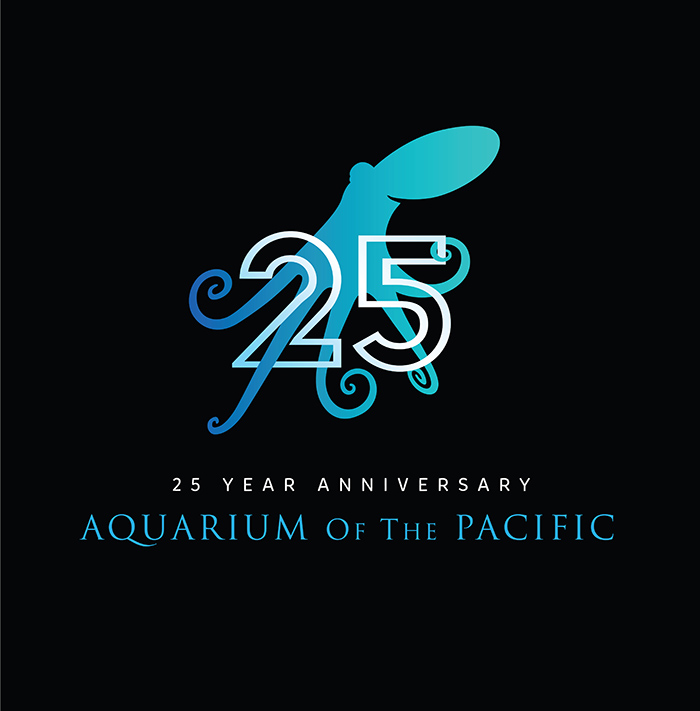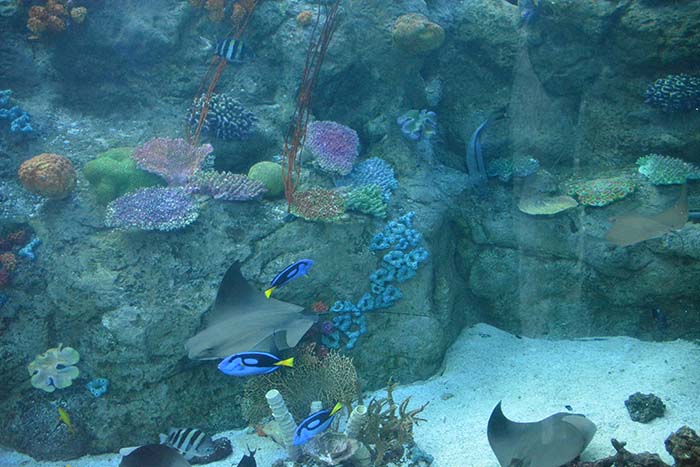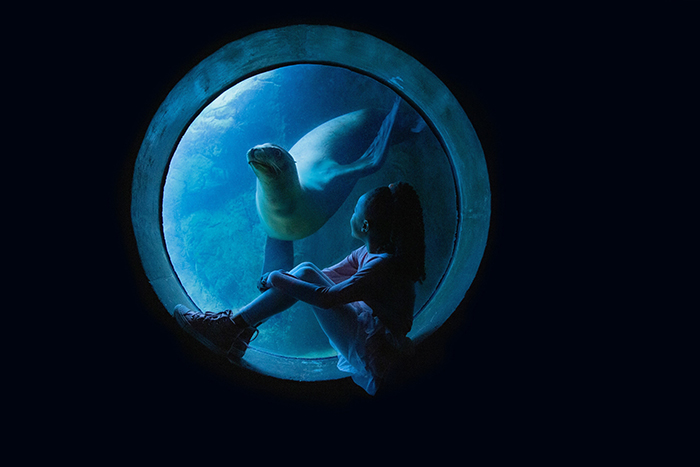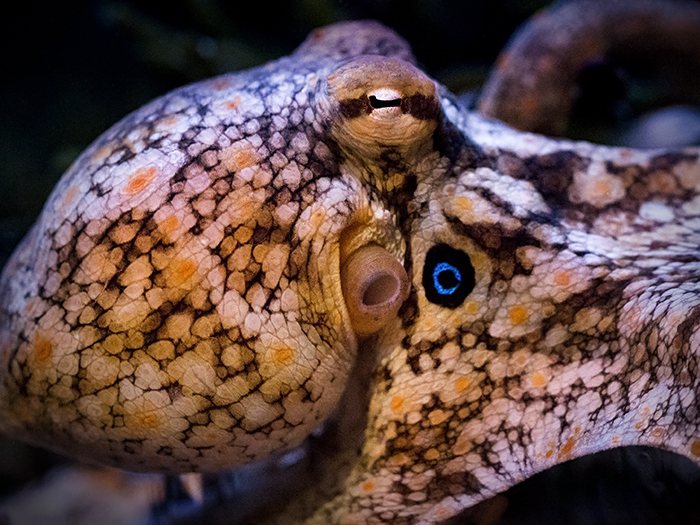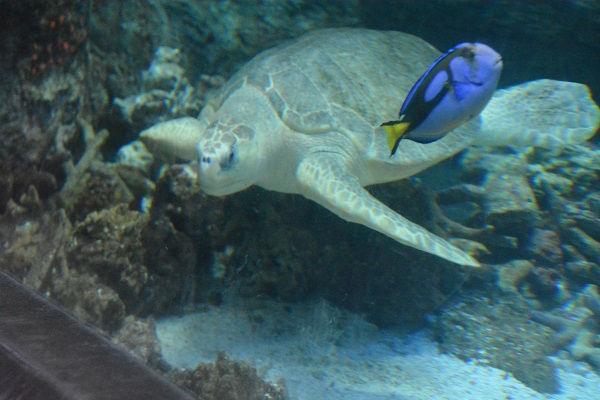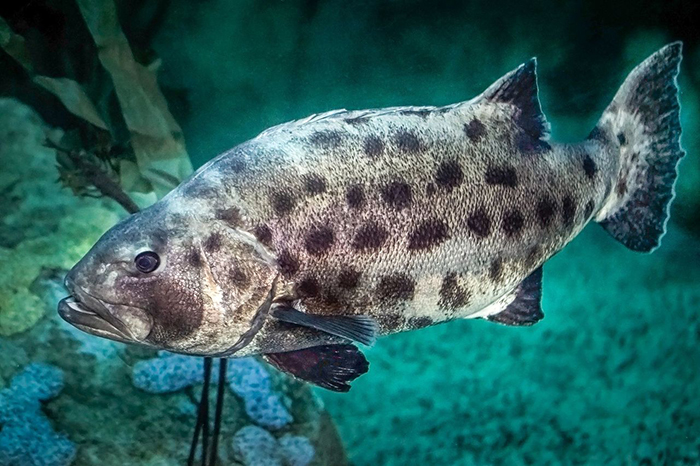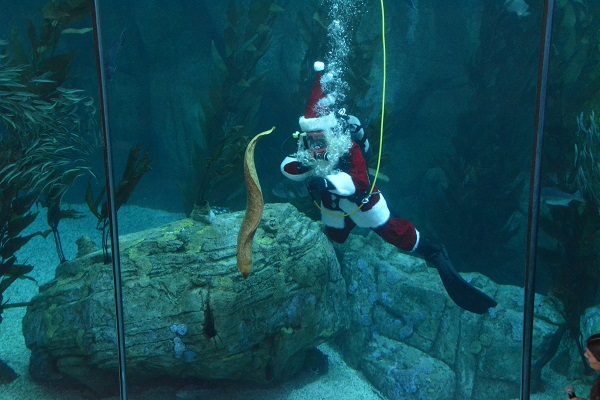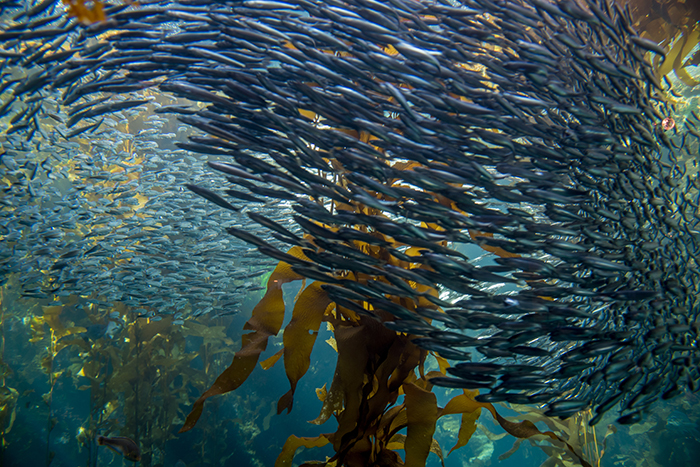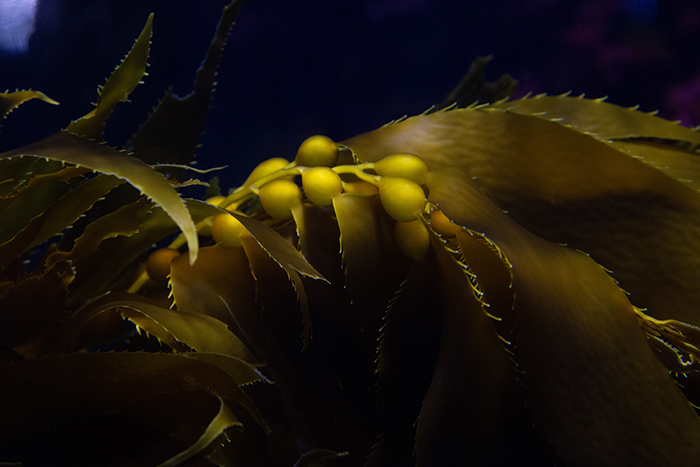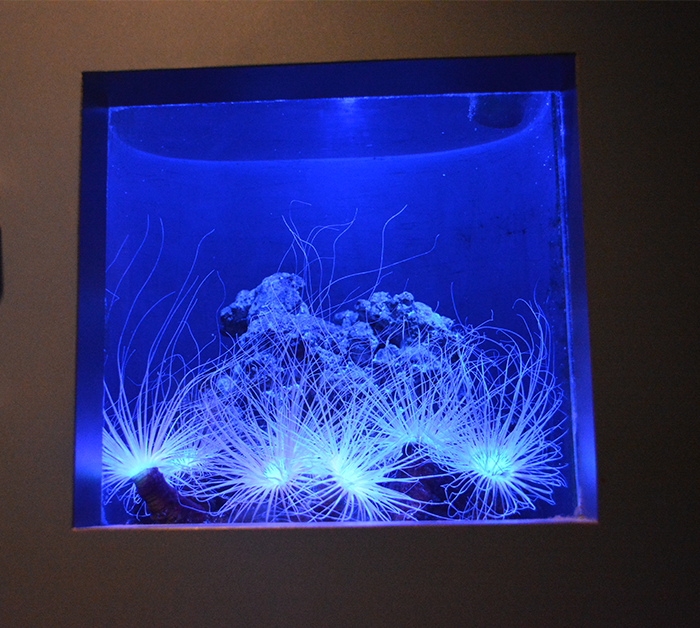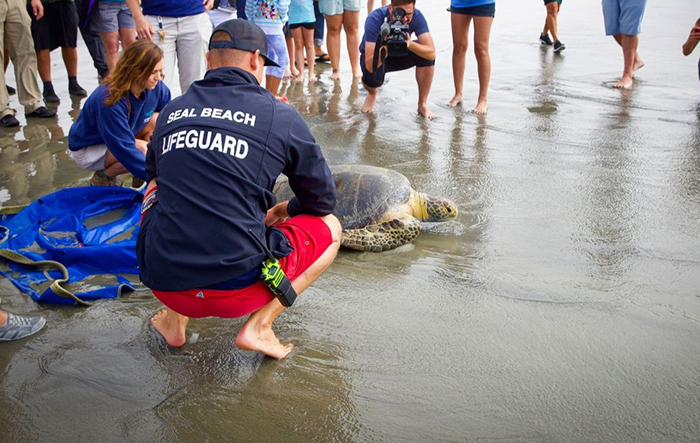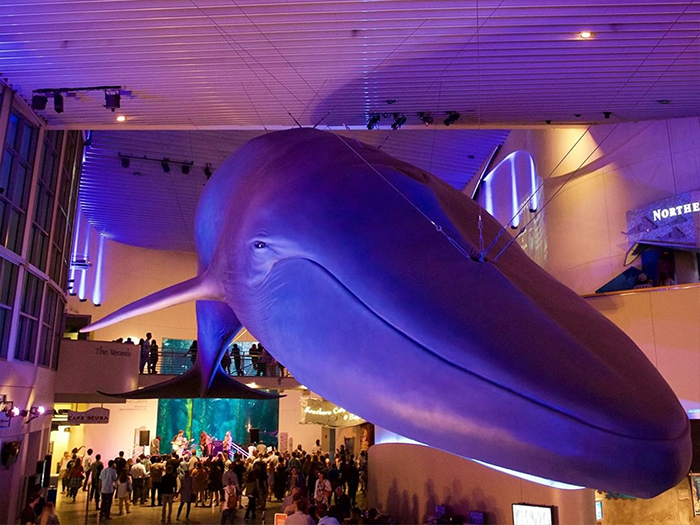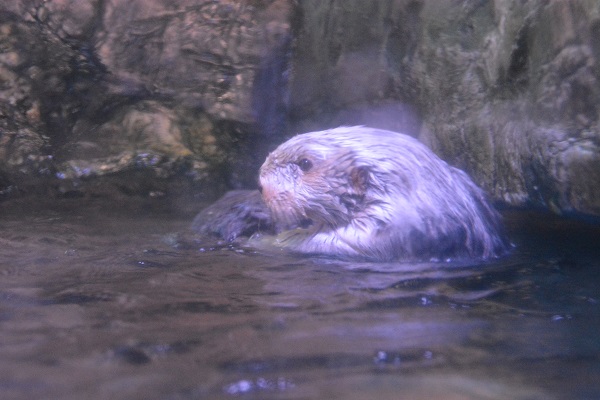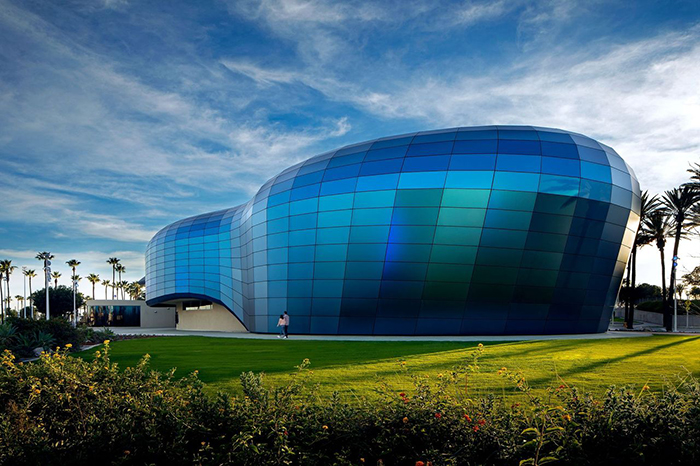by Noella Noelophile®
Already? Absolutely: the Aquarium of the Pacific is celebrating their 25th anniversary! Tomorrow, Friday, May 26th, is the start of their celebration.
Festivities continue through the end of the year. You’re invited!
Now, what are some of the ways to celebrate twenty-five years of education, conservation and community involvement?
For starters, a new exhibit, a new film, new programs and a new gallery.
And as the Aquarium embarks on their next quarter-century of education and conservation, their theme, going forward, is “connection”.
“Connection to nature sounds like a cliche. It isn’t,” said Aquarium President and CEO Dr. Peter Kareiva, during a Wednesday morning online press conference.
“It’s one of the most active fields in science.
“…There’s really good evidence that it improves your…mental health.”
Among the benefits Dr. Kareiva named were enhanced cognitive abilities and stress reduction.
“Connect to nature. It’s good for nature, it’s good for us, and I think it’ll be good for conservation and education ,” Dr. Kareiva continued.
“And I think another theme that you’ll see very much, is recovery and restoration. But these, he said, are not just a “doom and gloom” story.
“Things come back,” Dr. Kareiva explained. “And the Aquarium’s really engaged in bringing things back.”
Among the new offerings which Dr. Kareiva highlighted were the Aquarium’s new photo exhibit, spotlighting the winners of a “photos of nature” contest, and a new podcast, “Podcific,” scheduled for launch in the near future.
As always, fun and imagination are a key element in the Aquarium’s programming.
“We have a really cool contest,” Dr. Kareiva said.
“…Every day, you’re challenged to come in and see if you can find the octopus. Be the first person to put it on social media, and you get a prize.
“And it’s not just a game. It causes you to look at the exhibit and see what’s going on.”
Celebrating Southern California’s ocean

(Reef scene at Farnsworth Banks, Catalina. Image by istock.com/KGrif and courtesy of Aquarium of the Pacific.
A brand-new gallery will also be part of the commemoration.
“Our new Southern California Gallery will debut during our 25th-anniversary celebration on July first.” announced Faria Qader, Director of Pacific Visions and Architecture.
“This gallery will focus on local ocean habitats, like the ocean’s kelp forest of Casino point off Avalon,…the underwater mountains of Farnsworth Bank and Avalon, (and) the sea grass meadows of Orange County and the open ocean.”
These exhibits, she continued, will be framed with immersive elements which set the scene by allowing visitors to experience underwater imagery.
Meanwhile, the new exhibit will feature more than three dozen species from the Southern California area.
“There are so many animals to get up close with you as you learn more about their habitats,” Ms. Qader said.
Expect to be wowed by a number of these.
“The state marine fish, the garibaldi, can be easy to spot in our Casino Point habitat due to its bright orange color,” Ms. Qadar said. “The California two-spot octopus…will be in our new Focus exhibit.”
…”Adjacent to the entry of the gallery you can see the adult giant sea bass, which can grow to the size of a mountain lion.”
An “eel’s” perspective
A lighthearted presentation, with a serious message, came next.
The Aquarium’s “Pacific Pals” Manager and Artistic Director, Luke Richmond, made an appearance, with his puppet companion, Bertrand the eel.
After some back-and-forth banter, Bertrand summed up the issue of connecting with nature in Southern California.
“So you feel connected to nature by visiting a place like MY habitat but you feel disconnected…when you go back to YOUR habitat. Your house caves, your office holes or whatever,” he commented.
“…That doesn’t seem right, you know. I see stuff from your habitat in nature all the time!…How would you like it if I dumped a bunch of trash on your lawn and then said, ‘Oh, Luke, please, tell me how to connect with your lawn’?”
After a tongue-in-cheek exchange in which Bertrand angled for “a million dollars”, the duo got down to serious business.
“The best way to connect with nature in…Southern California or elsewhere, is to care for and conserve nature. And life is a never-ending series of opportunities to do just that,” Bertrand said.
“…Shopping, buy sustainable products. Going to work, car-pool. Bike. Take the bus! Reduce your household waste. Invite your neighbors to a beach cleanup. Become a citizen scientist and help study turtles and climate change and urban wildlife.”
“…Then when you go out and enjoy nature you’ll know you’ve done your part to keep all of it, yourselves included, healthy and thriving.”
A conservation “roadmap”
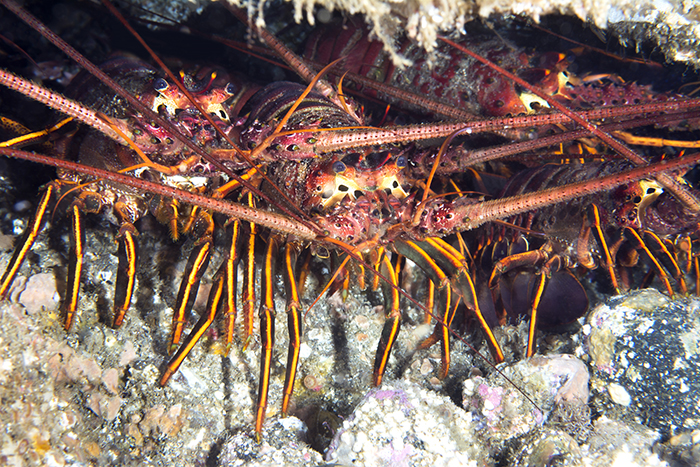
A group of lobsters hiding under a ledge at Catalina Island in Southern California. (Image from istock.com/joebelanger courtesy of Aquarium of the Pacific.)
The morning’s final presenter, Vice President of Education and Conservation Jennie Dean, offered a closer look at some of the ways that can happen.
“Southern California has a rich diversity of habitats,” she began, before explaining some of the benefits of each, to individuals and the planet.
“…Seagrass meadows, kelp forests and marshes store carbon and mitigate climate change. They also serve as coastal buffers,reducing erosion caused by waves and storms.
“Our ocean provides us with nutritious food, and there are increasing opportunities to augment natural production…”
Recently, she continued, coastal development and climate change have led to dramatic habitat losses.
“California has seen about 90% of its seagrass meadows and kelp forests decline in the last several decades. This loss doesn’t need to be permanent.”
“As Dr. Kareiva had suggested, our (new) gallery talks about some of the restoration work…here locally,” Ms. Dean said.
“But it doesn’t have to just be restoration work…you, as individual citizens, can also take direct actions .”
Lighting, she suggested, was one such area in which individuals could make a change in their homes, by switching to LED lighting. Another possible change was to make different choices for transportation, while traveling in our daily lives, as opposed to always driving.
Next, Ms. Dean highlighted several of the Aquarium’s conservation projects, starting with a new one.
“We have a genetic diversity project here, where we’re storing samples of bull kelp…(so that in the future) that we could do kelp restoration for some of the losses that we just described.
Additional programs, she said, included breeding programs for endangered and threatened species. White abalone and giant sea bass are among some of the animals bred and released back into the wild to increase their natural population.
Then, there are the Aquarium’s observation and research programs.
“For instance, we have volunteers who go out every month to the San Gabriel River and document green sea turtles that exist there,” Ms. Dean said.
Besides observing the turtles, she added, the Aquarium has a rehabilitation and recovery program for any species in distress in local waters.
Aquarium volunteers also participate in research on whales, taking and contributing photos to a West Coast research collective database. Meanwhile, scientific divers from the Aquarium partner with local educational institutions, monitoring ocean habitats and documenting species found in artificial reefs.
Your opportunity to engage
With the Aquarium’s outreach to the community, of course, come multiple opportunities for the public to engage in their mission of conservation, restoration and education.
Ms. Dean highlighted a few of the ways people can do so, starting with their Los Cerritos Wetlands and restoration work.
The Aquarium, she says, has staff and volunteers go out to Los Cerritos Wetlands the first Saturday of every month. There, they remove invasive species and plant natural ones, with the goal of restoring the habitat.
In addition, the Aquarium has a program in which people can participate on their own timeline. Called Taking Responsibility and Saving Habitats (T.R.A.S.H. is the acronym), this program has volunteers remove debris in their local neighborhoods.
New for the future
And as Aquarium of the Pacific launches into their next twenty-five years of preserving our oceans and our planet, a new conservation initiative is on the horizon.
In 2024, the Aquarium will launch the California Marine Species Report Card.
Ms. Dean explained that this initiative will evaluate and provide a letter grade on the health of a few dozen species–both plants and animals–found in our local waters.
Included in the report will be the conservation initiatives which different groups are taking to ensure the health of the local marine life.
“We are embarking upon this work as part of a collaborative, so it’s not just the Aquarium but there are a series of other organizations and individuals, from academia to government, to the private sector, helping engage in this work,” she said.
“We can’t wait to share the final product with you, next year.”
Congratulations, Aquarium of the Pacific, on your silver anniversary! Not to mention all the ways you use entertainment and humor to educate everyone on the importance of conserving the incredible life forms with which we share our planet.
These next twenty-five years are off to an amazing start.

